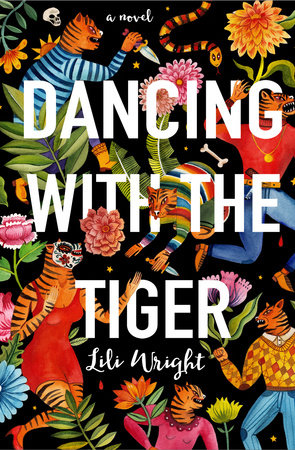READERS GUIDE
Reading Group Guide for Dancing with the Tiger 1. Each chapter of
Dancing with the Tiger enters the consciousness of a different character. Why is the story told this way? How did this affect your reading of the book? Who was your favorite character? Why?
2. In the opening paragraph, the looter, high on meth, thinks: “Everything that mattered in life was buried, covered up, lost, afraid to show its true face. Few people had the courage or imagination to dig.” Do you agree with his observation? How does the idea of burial—real and metaphorical—weave its way through the novel?
3. Anna steals, lies, and uses her sexuality to pursue her goals. Is she a moral character? What about Soledad, who also keeps many secrets? Have you ever behaved badly to achieve what you considered a worthy goal? Do you regret having—or not having—done so?
4. At the beginning of the novel, the papershop girl asks Hugo what sacrifices he has made for their love. What sacrifices does he make and what are the results? Is a willingness to sacrifice a good measure of someone’s love? How does the theme of sacrifice play out in the rest of the novel?
5. After realizing the depths of Thomas Malone’s depravity, Salvador remarks, “You Americans all come to Mexico to lose your minds.” How would you describe the relationships between the Mexican and American characters in the novel? Do you become a different person when you travel or live abroad? If so, how, and if not, why not?
6. Daniel Ramsey is an avid art collector, yet he ultimately decides not to keep the funerary mask. Why? In your experience, what are the joys of collecting? At what point does collecting tip into excess or even addiction?
7. The Malones’ marriage is a difficult one. Why does Constance stay with Thomas? Why does he not leave her? What do you imagine happens to them after the fire?
8. Several characters struggle with their spiritual faith. In a desperate moment, Hugo prays to a rock. Constance tells Anna that Mexicans shoot fireworks because they are trying to reach God, but that He never answers. Anna laments that God talks to everyone but her. Can the novel be seen as a religious quest? If so, who finds or loses faith?
9. Reyes is a drug trafficker, an assassin, and all-around bad guy. But when he makes his videotaped confession, do you feel sympathy for him? Why or why not?
10. In the Santa Muerte chapter, did you find the Angel of Death to be a cruel or benevolent figure? What does it say about life in Mexico that some people pray to Santa Muerte? Do we have anything analogous in the United States?
11. At one point, the Looter marvels at how women keep saving him. Yet he is murdered at the end of the novel. Has he been saved? How does he change during the course of the story? How do other characters change?
12. Most children—and many adults—enjoy dressing up at Halloween. What are the pleasures of wearing a mask? Do you ever feel as though you are wearing a mask in everyday life? If so, how does this make you feel? Are masks necessary? Do you agree with Reyes that everyone has something to hide?

